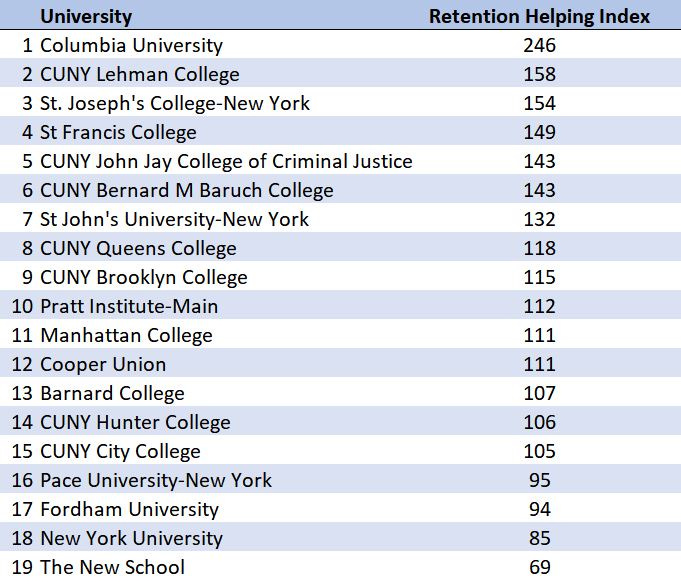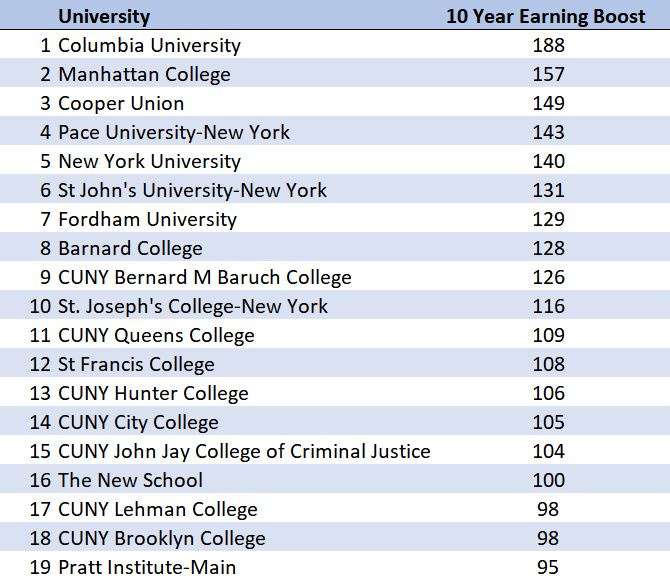Not long ago, students with college ambition would know their scholastic fate by judging the size of the envelope in the mailbox. Today, seniors find out with an e-mail notification to check their application portal.
That was last week.
This week, acceptance uncertainty is (mostly) over, but students and families have to make one of the most expensive decisions of their lives. All of the research that went into applying is reviewed and new information has to be considered, such as financial aid and loan offers. For many, this is the fun time filled with hope and excitement. For others, it is more stressful than the prior week.
One of the main resources people use to decide are “rankings”. Whether it is US News, THE, or QS, these common resources definitively say that one school is better than the other. It is not difficult to find the flaws in this system.
These rankings often do not account for the incremental value of attending a university compared to other universities with similar student bodies, resources, and courses of study. New York City is home to many great educational institutions, and this week, 2xParked is investigating a couple types of value each university adds.
Retention
One of the major kpi’s used by universities, rankings, and informational pamphlets is the retention rate. Specifically, this rate looks at students who start in the fall and return to the university in their second fall. Reasons for not returning include transferring to another school, taking a leave of absence, or dropping out all together.
You might expect a university to have a better retention rate simply by having better students. This has nothing to do with the resources or services offered by the university. So what value does the university add?
Using fall 2017 freshmen as my base (IPEDS data), I investigated if these students returned to school in fall 2018. Instead of solely looking at retention rate, I compared each university’s retention rate to what we might have expected a school with similar incoming student profiles and financial constraints to have.
100 means the university is helping students succeed as “as expected”. This metric is assumed to be a combination of academic, residential, and social assistance not measured in the model.
Columbia University is #1 in this metric. This means that even though Columbia’s 99% retention rate is likely due to having motivated students, a lot can be contributed to the resources Columbia has to offer these students.
Earnings
Earning a degree is one thing, but prospective students are interested in how the university will help professionally.
Using data from IPEDS and College Scorecard, I modeled the boost in income after 10 years of graduation due to the university. This is an estimate of incremental salary gains resulting in a boosting index centered around 100.
Again, Columbia university over-performs and is #1 unsurprisingly in this metric. This means that graduates of Columbia outperform similar universities with top ranked freshman classes in terms of income earned.
There are a lot of good universities in New York City. Both of these metrics indicate that most NYC based schools are performing better than the national expectations. There is no magic formula to choose what is best. These are just two more metrics to help guide your decision, but ultimately, if you work hard and meet a lot of people in a supportive environment, you will find success wherever you attend.
MayorModel
Since Mayor Lindsay left office in 1973, only one New York City mayor has not enrolled in a New York City based university degree program: Mayor Bloomberg.
The most common university to produce mayors during this period is NYU, which is the alma mater to our outgoing mayor.
Half of the top polling candidates have at least attended some form of college in New York City (Yang, Adams, Stringer, Wiley). This means we will have a 82% chance of continuing the NYC college try.
"Graduation" was drawn by Ink&thyme, drawing life's unforgettable moments. For unique art drawn just for you, check them out on Facebook and on Instagram.
To subscribe to future or check out past newsletters, click here.
For more content, follow 2xParked on Twitter @2xParked.
Comments? Suggestions? Questions? Email me at 2xParked@gmail.com.






